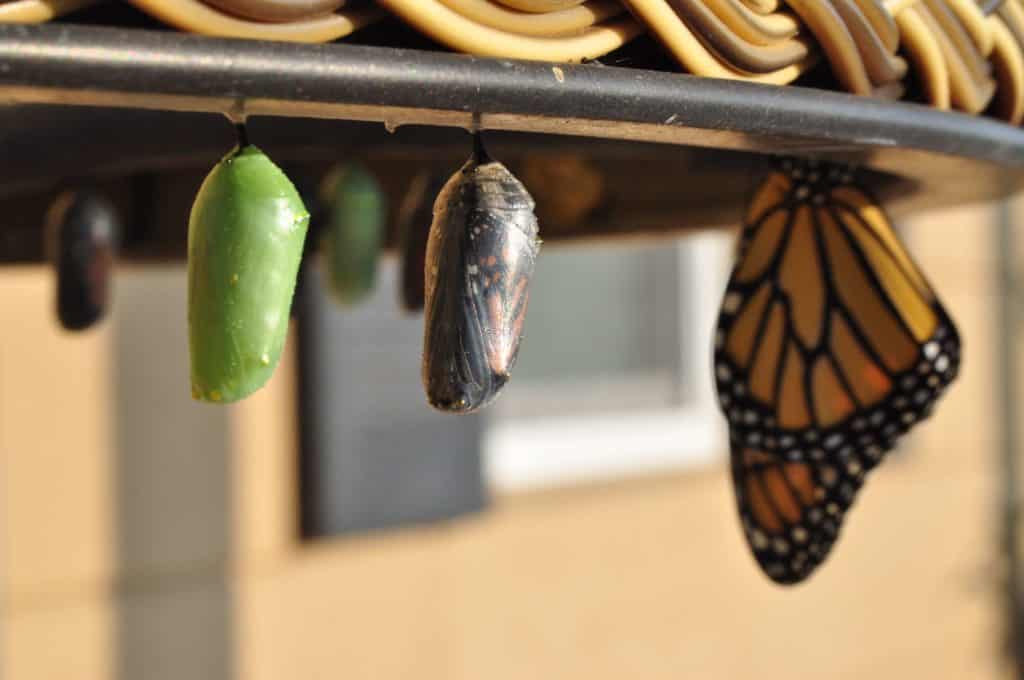
How to Raise Strong and Confident Daughters
When your daughter recognizes that you believe in her, she begins to believe in herself, and has confidence to pursue her dreams.

Solid strategies for helicopter parents that can land the whirlybird while encourage their children’s growth and learning.
After slip-sliding my way to work, I called home. I didn’t think the weather was right for our daughter to take her driver’s test. “It’s too icy,” I said. “I don’t want her to do poorly because of the weather.” My husband and daughter didn’t think the same way, and despite my reservations, drove to the testing center. I worried—would she fail? This was the wrong strategy for her growth and learning. The helicopter parent in me had taken flight.
Are you like me and worry about situations like this? Recent reports show higher levels of anxiety in children as well as higher stress in college students. Often this goes back to parents taking too much control of their child’s life. For example, this can include not letting them problem-solve, advocate for themselves or experience natural consequences. When we parents eliminate issues and make life so comfortable, our kids lose some “toughness.” It hampers the child’s growth. Helicopter or lawnmower parents have good intentions, but these good intentions can backfire.
Focus on the Family counselor and author , Tim Sanford, shared ideas with me to help develop healthy growth and learning in my kids. These strategies helped me see my desire to protect my daughter could rob her of opportunities to develop confidence and strength. Therefore, he encouraged me to view my job as a parent differently. Instead of being fearful and trying to control a situation—he encouraged me to think hard is good. The goal is to be purposeful and progressive in the maturing process. Maturity takes time and patience which means failure is part of the process.
Kids need challenges. Challenges require manageable risk. An important concept to understand in managing risk is the idea of hurt versus harm. A teen going out in the snow without a jacket might learn the importance of a jacket because it’s freezing. She’ll feel hurt by the cold. However, since she is close to home, she can realize her error and fix the situation. This is a manageable risk. The hurt comes from being cold. She will not experience permeant damage or harm. That is to say, allowing small risks is a good place to let go of being overly directive. This is hurt not harm.
However, when an action can cause irreparable damage, such as long-term consequences or even death, this is harm and needs to be managed. Harm might come from taking a hike far from home without a jacket. If the teen doesn’t fix her error quickly, she could freeze to death without proper gear. Regarding harm, parents need to insist on safety. Other examples of harm would include behaviors such as riding a bike without a helmet or drug abuse. Understanding what will hurt versus what will harm your child is a key factor in whether you take control of a situation or give the choice to the child.
“Few things are really harmful.”

Back to my daughter’s story. The testing center turned out to be closed—due to icy weather. However, driving to the center gave her even more confidence in her abilities as a driver. Later when she took the test, she passed easily. Consequently, I realized my worry had come from a desire to protect her rather than help her learn and grow.
Often it seems like we need to protect our children or prepare them. As Tim Sanford said, “It is not an either/or scenario, it is actually both/and.” Children need to grow into their own and stay connected to the family in healthy, appropriate ways. We pave the way through conversations from early ages which are nonthreatening. Therefore, have a goal in mind for progressive growth and learning to take them through childhood.

I went to watch my elementary aged son play football. I kept weaving in and out of the crowd trying to see him. He looked small compared to the other boys in the huddle. We played football in the backyard, but this was different. My heart sank when while chasing after a player, one of the larger kids knocked him off his feet.
I wanted him out—now! When my son got back up, a chunk of grass still hanging from his facemask, he had a huge grin. Eventually, his team gave him the nickname “Rudy” because of his great attitude. He never gave up.
In sharing this scenario with Tim, he talked about the natural process we work through as parents to help prepare our children for responsibilities. It is:
Tim said parents can engage in progressive responsibility building from about age two on. At each stage, a parent can gauge if the child is ready for the next challenge. First, ask what is the next logical step? Second, have the child try. If the child succeeds—cheer him on. If the child fails—work through the situation with them. Does he need more training? Or should he take a step back? Is this part of the learning process? Finally, remind them hard is good and failure is a normal part of healthy growth and learning.
Despite the bruises and grass stains, my son learned to be tenacious. In short, he learned a faithful attitude through the challenges. Tim’s concept helped. It was an important part of my son’s growth and learning and it happened as I let go.
When my daughter started junior high, she anticipated making new friends. We talked about basic friendship skills: smile, say hi, listen to others and find activities together. That was the easy part.
The tough part came when my daughter friended a “popular” girl. Unfortunately, it became clear the girl didn’t care about my daughter. Moreover, another family ended their association with the popular girl because they worried for their daughter. I understood their concerns. I wanted to say the same thing, but my daughter asked to keep the relationship.
There were ups, but many downs. When the tears came, I felt so frustrated. I wanted to storm into the middle school and point my finger at this girl. How could she be so unkind? It also frustrated me—why would my daughter let someone treat her this way? She knew better. As a result, I wanted to take action.
Again, Tim Sanford shared about the natural progression in growth and learning regarding relationship skills. First, share the skills of friendship. Second, start conversations on when to use these skills. Finally, examine it with her. Some questions to ask could be:
It’s helpful to have her articulate what she is looking for. She may not realize it until she has said it out loud. The progressive nature of having skills, to applying skills and then testing the use of those skills is important in middle school.
Although the popular girl never fully became the friend my daughter hoped for, I saw a change in her. Hurt, in this case, was a good teacher. In high school, she made better choices. She had a new frame of reference. I’m thankful my husband and I didn’t rob her of the opportunity for growth and healthy learning.
My son took an advanced class in high school. He did well in junior high; therefore, we didn’t expect any issues. My husband and I were surprised when we received notification of a failing grade. We didn’t know about his struggles. Frankly, I panicked. What would happen? Was his future at risk?
Tim talked about helpful strategies for growth and learning when the outcome is not what we hoped. There is a progressive process we can use. He suggested the following:
As we talked with our son about the failing grade, we discovered homework patterns working against him he could change. In addition, ways to be a self-advocate. We pulled out lessons from the experience which is a life skill for everyone. We all learn and grow more from failure than success. Failure is not harm. It hurts, but it does not devastate us.
We want to protect our children. Yet, being controlling or eliminating all difficulties can hurt the maturing process. Remember, the end goal is for our children to learn and grow into healthy, confident adults.
In conclusion, if you’re a parent who struggles, like me, with a desire to control the situation too much, here are some questions that have helped land the helicopter in me:
Being a parent can be hard. So, keep your eye on the big picture of parenting. Let go of unhealthy desires to overprotect and realize failure can be a catalyst to growth. With a solid plan for growth and learning, we can let our children learn and grow through life helping them on their journey.
When kids ask to see a movie or play a video game, consider if it could be a learning opportunity. Watching or playing together can be a conversation starter and a way to practice discernment together. If you need assistance in this area, Plugged In can help.